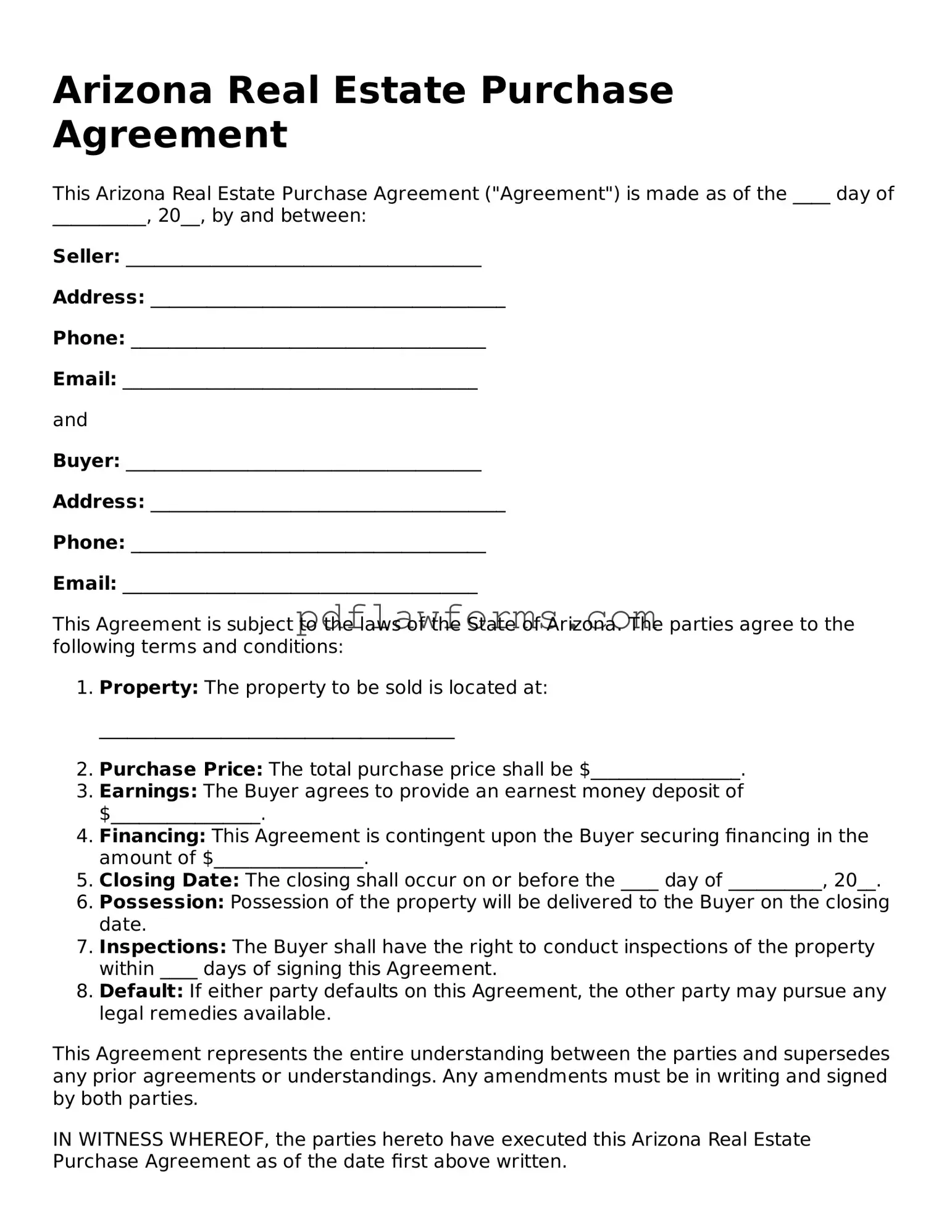When navigating the world of real estate transactions in Arizona, understanding the Real Estate Purchase Agreement form is essential for both buyers and sellers. This comprehensive document serves as the backbone of any property sale, outlining the terms and conditions agreed upon by both parties. Key components of the form include the purchase price, which specifies the amount the buyer is willing to pay, and the earnest money deposit, which demonstrates the buyer's serious intent. Additionally, the agreement details the closing date, allowing both parties to prepare for the final transfer of ownership. Important contingencies, such as financing and inspection clauses, are also included, providing necessary protections for buyers while ensuring sellers have a clear timeline for the sale. The form may also address issues like property disclosures, title insurance, and any applicable fees, ensuring that all legalities are accounted for. By familiarizing oneself with the intricacies of this agreement, individuals can better navigate the complexities of real estate transactions in Arizona.
